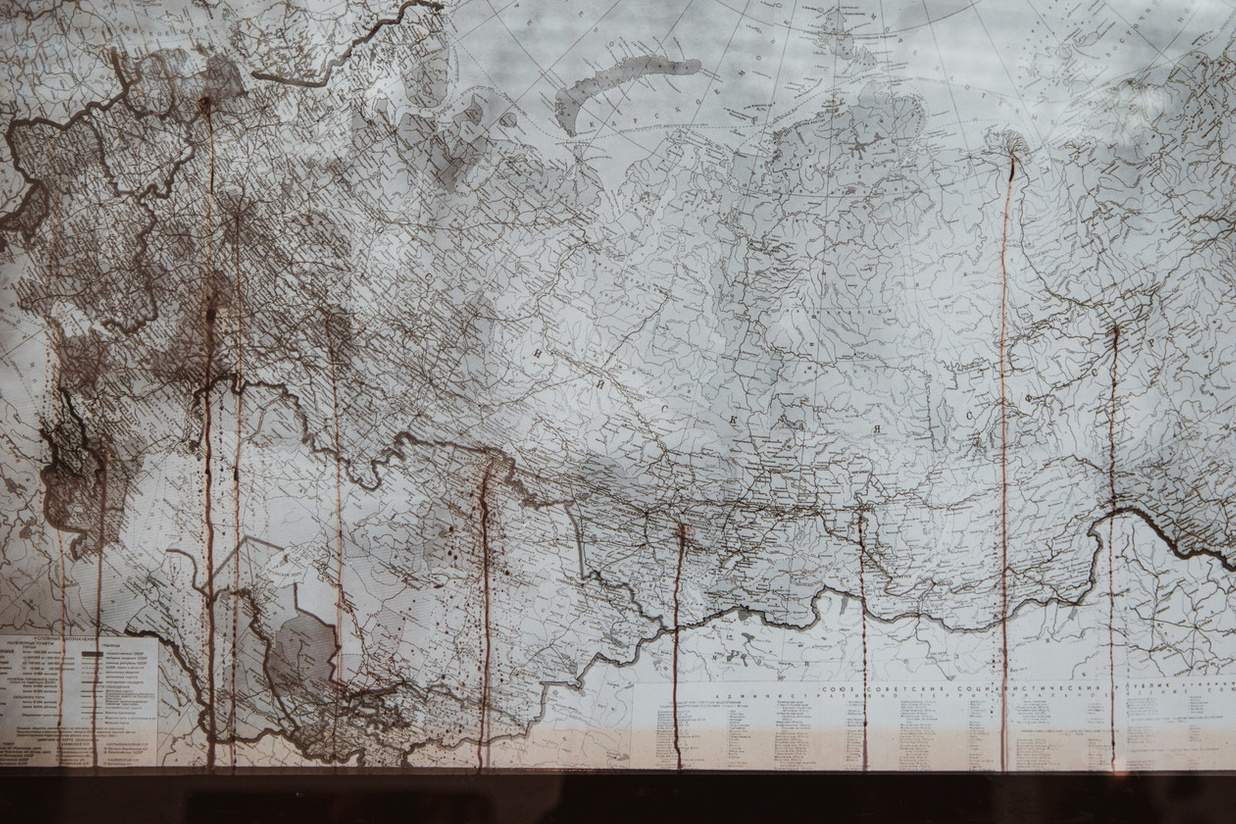
Most of the artist’s creations are based on the principle of illusion. Typically, the workings of the material or virtual design giving birth to his “wondrous pictures”, invariably stays in the shade (not to say “in the dark”), creating an effect of a magical birth of images “from nothing”. Everything happens in a sort of spontaneous way. A speck of light runs along a rail; “sun” spots fly out of bird cages, scattering in space, toy flies bustle on a real map, night reflections mysteriously move on the walls and a liquid, black as the blood of the earth itself, oozes from subway-style drop-shaped lamps shining with a milky light.
Trushevsky systematically exploits the possibilities of the light, which is, of course, quite natural for a person who grew up in the era of the “screen arts”. Yet, the light is but the most obvious, but not the only matter used in his “illusions theatre”. The current project playing on geographical maps is just a proper one to illustrate alternatives to the effects of laterna magica in the creative effort of this artist. Here the wonders mentioned above (the projection-based tricks) are complemented with “magical objects”. While the standard physical map dramatically “sheds skin” and a map of transport communications animates, not without the help of the ray of light, the dynamics of movement of various cargoes, the maps of water arteries and the flora map come to life nearly for real. The first one lives, over and over again, the Deluge in miniature, while the second one operates as a soil substrate for thickets of multi-coloured mould.
Characteristically, что most of the “geographical material” employed is represented by maps of the USSR, a country that passed into history at the same time with the childhood years of the artist. Which is why we can assume that both his affection for “small wonders” and his love for for the old Soviet atlases belong to the single area of his personal infantilism. Not to mean, of course, infantilism in medical or diagnostical sense but only in the sense that our core phychic matrices form during out shildhood years, and subsequently get interwoven in odd, but strong knots. As we move away from them, both in space and in time, these things and notions become ever more “inviting”. In this sense, geographical shifts turn out to be at the same level as travelling to other periods in time. And while the lot of the ageing artists is an aesthetic search in the sector of ordinary materials, established forms and everyday themes, the minds of the new generations relentlessly strive for the horizons of the “faraway heavens”.
It is well-known that the ontogenesis (individual development) repeats the philogenesis (evolution) and the current popular passion for magical objects has its precedents in history. One such precedent was the so-called curiosity cabinets, or kunstkammers of the 16th and 17th centuries (on later example of which is the Kunstkammer of Peter I in St. Petersburg, where the author of the project comes from). These kunstkammers (literally: “chambers of art”, as the art was formerly perceived as any true skill competing in its achievements with the creations of the nature) were collections of varied evidences of history and overseas exotic objects along with natural, scientific, cultural and artistic curiosities without any scientific museum classification and hierarchy, as similarly stricking treasures. It is them that represent an ideal receptacle for Ilya Trushevsky’s “magical cards”.
Vladimir Levashov